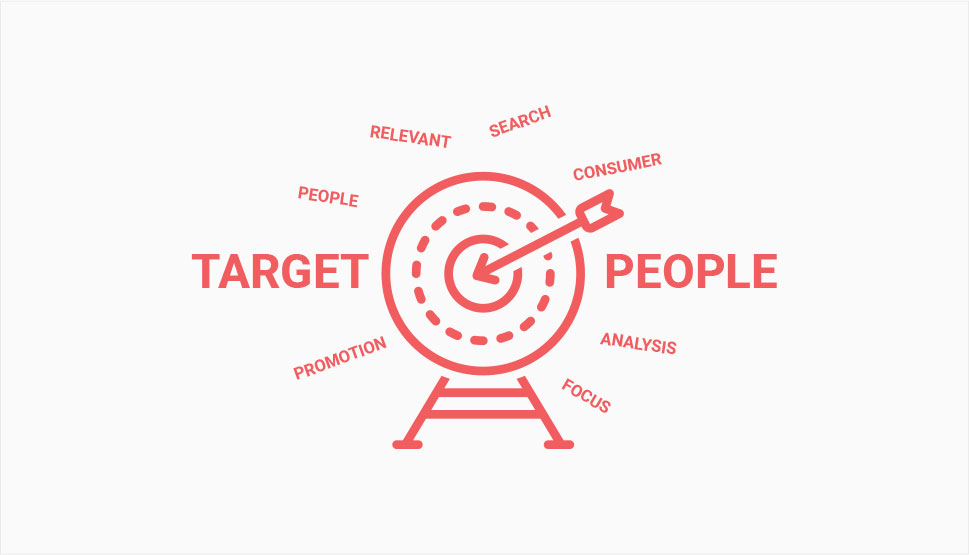How to Pinpoint the Target Audience for Your WordPress Blog

Inspiration is a very powerful thing, and it is often precisely the thing that makes a difference between average and great content. However, no matter how inspired and skilled you are in shaping your ideas into words, if you don’t know who you’re talking to, there’s a big risk that the audience you really need won’t hear you. Think of it this way: a doctor will use a completely different approach when explaining a certain condition to a patient, and when discussing it with a colleague. The content of his message may as well be the same, but the way he talks about it is substantially different. That’s why it will never be enough just to know the matter you’re writing about really well. You also need to know your target audience even better.
To help you make the best of your website and find the optimal way to reach your target audience, we gathered in one place all the tactics and advice that are proven to work. At the end of this article you’ll also find our suggestion of the tools that can be of a huge help in this process. Before we dive in, let’s just remind you why it is important to know your target audience.
Why You Should Know Your Target Audience

If you don’t know who your target audience is, you will not be able to grasp how your users feel when they consume your content, what they get from consuming it, what is the main reason they come to you, how they behave after consuming your content/buying your product, and what problem you’re solving for them. These are all the answers you should have if you want to create a truly effective content marketing strategy.
All the people that come to your website have at least one thing in common. What is it? Is it a demographic feature like age, location, gender, or average income, or is it a problem that they all share? If you write for everyone, chances are you’ll resonate with no one, so focus on your ideal audience persona and set your communication style accordingly if you want to see real results.
In case you are not starting from scratch and you already have an up and running website with a certain audience, it’s possible that there is a fine difference between the audience that you’re attracting and the audience that you want to attract. If these two categories match – congratulations, you’ve done a good job. But in reality, we often have to try a bit harder to reach the right audience, and a detailed analysis can only do us good.
11 Ways to Define Your Target Audience

Before we continue, let’s just get one thing straight – no matter what your blog is about, you are always selling something, be it an idea, service, or a physical product. For the purpose of this article, we are taking the term “sales” in a very broad meaning – it can be any type of value exchange, not just the usual product-money transaction.
Here are some practical tips that can help you pinpoint your target audience:
Your first step should be to take an unbiased, analytical look at what it is you’re offering. Ask yourself the following:
-
What are you selling: is it an idea, a lifestyle, service, knowledge, product…? What does it do for your users? Does your product solve a problem for your audience, does it improve the quality of their life or career, or does it make them feel better?
-
Who are you selling it to: who do you see in your mind when you write a blog post? Who could benefit the most from the content that you are offering? How do you imagine your ideal user/customer?
-
How are you selling it: what is the most effective sales channel for you? How can you reach your ideal customer in the most natural manner?
-
Why are you selling it: What is it that you hope to achieve – are you hoping for a quick profit or plan to build a community around your product?
Knowing precisely what it is that you are selling will make it much easier to define your ideal customer/ buyer persona. Knowing what and who you are selling it to makes it a lot easier to choose the most effective sales channel. And finally, knowing what you want to achieve with your content will help you set the overall tone of your communication in every aspect.
There is no deep philosophy about this – your primary target audience is the audience that pays for your product/service or reads your blog regularly. The preferences and characteristics of this category of your users/consumers are what will influence your content strategy the most. But, that’s not your only audience. For example, if your target group are teenagers, chances are their parents still play a large part in their decision-making process so the parents will be your secondary target audience. Although not as obvious as in the above example, every target group is influenced by some other group of people. It can be their family, their professional environment, a blogger, a particular media outlet or community, etc. Knowing your target audience means that you also know who its biggest influencers are and that you take care that your overall tone of communication and marketing strategy appeals to them as well.
Does this mean that you have to take into account more than one target audience? Yes, absolutely. But it doesn’t necessarily mean you have to create content for each identified target group separately. Rather, you should take care not to overlook or discount your secondary target audience. The way you will tackle this issue mostly depends on the type of content/product/service you offer.
Demographics include data like age, location, gender, income level, education level, marital or family status, occupation, ethnic background, the device used, and similar. These data are very important as they will provide you with a basic framework for creating your typical consumer profile. What’s important to understand in relation to demographics is that not all the data you collect this way will be of equal importance to you. Depending on the niche you are in, you’ll be focusing on different aspects of your demographic. For example, if you are selling luxury cosmetics you will mostly be interested in the data about the income level, gender, and age. If you are a local business, your key demographic will be the location. So, it is not just about collecting these data but also connecting them in such a way that they make sense and help you define your ideal customer. For example, you may conclude that your typical consumer is a woman in her thirties, a fresh mother with a baby, who accesses your website via her mobile. So, for starters, you know that you need to have your website perfectly optimized for mobile devices.
After the demographic analysis provided you with a general description of your target consumer, it is time to get to know him a bit deeper. Think about the personality that stands behind the numbers you see in your website analytics. What are your target consumer values and attitudes, what does his lifestyle imply? How does he typically behave on your website? How does he typically structure his time? Psychographics will allow you to have a deep understanding of the needs of your target audience.
One of the most important steps in defining your target group is creating a buyer persona profile i.e. creating your ideal customer profile. Think of the person that comes to your website and buys your products/services or reads your posts regularly. What does this person need, what motivates him, what are his goals and challenges, who or what influences his decisions, what is his daily routine like, what matters to him? Try to imagine this person as precisely as possible, think of a name, age, lifestyle, and the language this person uses.
Now, when you have a clear vision in your mind, think about what you have that you can offer to this person to help him accomplish his goals, solve a problem or fulfill some other need or wish. What are the values, benefits, and advantages that you can give to this person to bring more quality to his life? The same applies to the secondary target audience.
After you have found and analyzed all the answers to the above questions, think of the places and moments when and where the interest of your target audience meets with what you can offer. This is how you will find the most effective communication channel for your target group, which is also hugely important.
Maybe you will find that you have more than one target audience. And that is actually a quite common situation. In that case, it will be very useful to organize your target audience into different segments based on a variety of categories, like demographics or psychographics, for example. That’s what market segmentation is all about – recognizing and acknowledging the different groups of your consumers. Only when you know how many target audiences you actually have, you will be able to create the content, set the communication tone and overall strategy that appeals to all of them in one or many different ways.
It doesn’t matter whether you run a lifestyle blog or a small business, knowing the wider context that your target audience comes from can do a lot for your website’s success. This means that besides understanding how your typical consumer thinks, feels, and acts you should also know the trends and unwritten rules that your target audience follows. For example, if your target audience is Gen Z, you may want to know about the jargon and the emoticons they use in communication, the influencers they follow, the social networks they use, and similar.
Although the market mapping tactic is usually used by businesses, it can bring benefits for bloggers too. The purpose of market mapping is to identify the gaps in the market/industry you are operating with. It is done in a couple of simple steps and you don’t need any special tool to do it. Just draw an a, y, x-axis on a piece of paper with two overlappings in the middle so that you can get four different segments. Then label one axis with age and the other with income level and place your competitors on the chart based on their customer base. This will make it easier for you to notice the gaps, and gaps are your chances to offer something new to the market. In terms of blogging, you can perform a similar analysis by introducing other factors on the axis, not just the income level.
The more precisely you define your niche, the better feedback you’ll get from your audience. There is no point in trying to please everyone. If you manage to target your niche audience well, you will be amazed by how loyal and engaged community you can build around your blog. Don’t think about your audience in numbers – it is better to have a small but true community of users who are constantly interested in what you have to offer than a large audience that never buys/consumes your content.
The power of a good, old survey should never be underestimated. Plus, they’re easy to set up – in WordPress, you can use one of the many user-friendly survey plugins. Make sure to design the survey questions in such a way that it allows you to collect the kind of info that is not available to you through any other method. Make your survey as specific as possible. For example, you can ask your users how exactly your product solves their problem, what kind of content/product they would like to see on your website, what made them decide to buy from you, etc. Bear in mind though, surveys are useful but not especially popular with users, as they often find it boring. You can solve this by offering some additional benefit for all those who complete the survey, like a discount or access to special content, etc.
Whatever you do online, you will face competition. And that’s a good thing because it gives you an opportunity to learn from other people’s mistakes. If you know your target audience well, the competition will not be a threat but rather an endless source of inspiration. You will always be able to find that fine line that makes a huge difference between you and your competitors, and the secret to success lies in knowing how to communicate that difference. The best way to go about it is to get to know your competition better.
Choose a couple of competitors that you find successful and analyze what they do: what tone and channel of communication they use, what type of CTAs, who are their loyal customers, and how they attract them. Don’t stop at analyzing their websites – see how they perform on social media, what kind of connection they establish with their audience, and what is the image they nurture. For example, your competitor may have established a great connection with the audience via their social media and makes a great use of live stream events on their FB page. Would live events work for you too? What is it that you could offer if you know that the kind of audience you aim at likes live events?
After you have collected all this information from all the competitors that are relevant for you, make a list of the things you like and dislike about them. The idea is to select all the things that you like and that you believe will work best for you, combine them with whatever it is that makes you unique and you will have a solid base to create an effective content strategy.
Tools to Help You Decode Your Target Audience
Although you can make a lot of conclusions about your target audience based on your intuition and common sense, there are more concrete and precise things that can help you. A wide array of analytics tools can give you actionable insights and accurate answers to questions like when are your users most active on social media, what age group is most likely to visit your website, where does your audience live, etc.
Google Analytics may seem intimidating for beginners but it is indeed a great tool to help you understand the interests and preferences of your audience. It allows you to collect data like age, location, gender, the device used, behavior, language, and plenty more that make it a lot easier to determine your target audience and plan effective campaigns.
Social media is also a channel you should never overlook, as it provides much more than just a chance to interact with your audience and build an image. In this respect, social media analytics tools like Facebook Insights, Twitter Analytics, and social media management tools like AgoraPulse, Audiense, Cloohawk, and similar can prove to be invaluable assets in feeling the pulse of your audience. They will provide you with detailed demographic info and help you grow and attract your target audience.
Another effective way to collect more useful data about your target audience is to use A/B testing tools. These tools will give you actionable insights about your users’ behavior and preferences that you can instantly use to optimize your website’s design and functionality.
Let’s Wrap It All Up
When you go through all these steps, you will be able to move forward a lot easier. You will have major guidelines for your content strategy, and you will know exactly what you are doing with every piece of the content that you create. If you are worried that this much analysis could jeopardize the divine, spontaneous inspiration that you usually count on when you create content – relax, this framework will just make everything you do more effective.
Basically, it all boils down to one general rule – choose the audience that you care about and learn how to reach it. Trying to please everyone usually doesn’t bring any results and can easily lead to you losing your authenticity. It is also important to understand that building a community of engaged readers/consumers is a process that takes both time and effort, but it pays off in more than one way.



